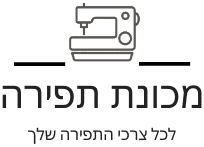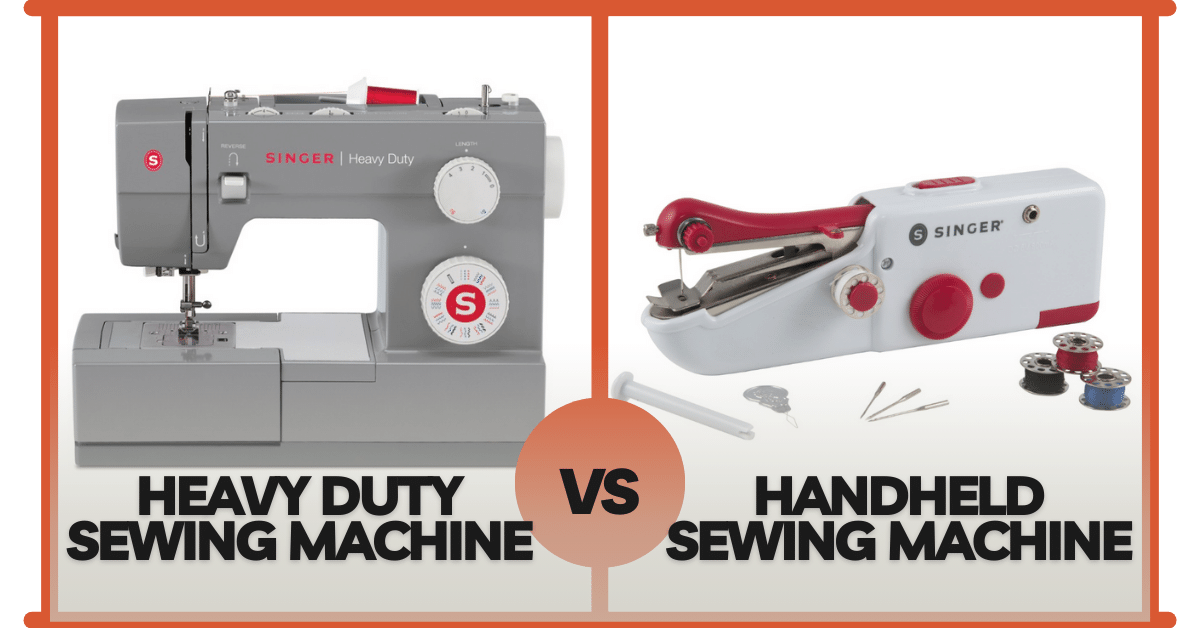When it comes to sewing, whether you're a novice or an experienced seamstress, choosing the right sewing machine is crucial. Beginners, in particular, often find themselves faced with a crucial decision: should they opt for the convenience and portability of a handheld sewing machine or invest in a heavy-duty sewing machine that can handle more substantial projects? In this comprehensive guide, we will thoroughly explore this topic to help you make an informed decision that perfectly suits your needs as a beginner.
Why Choose a Handheld Sewing Machine?
Handheld sewing machines are known for their portability and user-friendly design. They are perfect for quick fixes, on-the-go sewing needs, and small sewing tasks. Whether you need to hem pants, repair a torn seam, or work on craft projects, a handheld sewing machine can be your trusted companion.
Handheld Sewing Machine Features
-
Compact Design:
Handheld sewing machines are incredibly compact, allowing you to take them anywhere. They are ideal for those with limited workspace or those who enjoy sewing while traveling.
-
Ease of Use:
These machines are beginner-friendly, making them an excellent choice for those just starting their sewing journey. You don't need to be a sewing expert to operate them effectively.
Disadvantages of Handheld Sewing Machines
-
Limited Stitch Options:
Handheld sewing machines typically offer basic straight stitch functionality. They lack the versatility of full-sized sewing machines, which can provide various stitch patterns and options. This limitation can be restrictive if you have more complex sewing projects in mind.
-
Not Suitable for Heavy Fabrics:
Handheld sewing machines are best suited for lightweight and medium-weight fabrics. They may struggle when it comes to sewing heavy materials like denim, leather, or multiple layers of fabric. If you plan to work with such materials regularly, you might need a heavy-duty sewing machine instead.
-
Battery Life:
Some handheld sewing machines rely on batteries for power, which means you'll need to ensure you have a constant supply of batteries on hand. If the batteries run out during a sewing session, it can be inconvenient and disrupt your workflow.
-
Durability:
Handheld sewing machines are generally not as durable as heavy-duty sewing machines. They may not withstand frequent use or handle larger sewing projects as well. If you're looking for a long-term investment, you might want to consider other options.
Understanding Your Sewing Needs
Before delving into the specifics of handheld and heavy-duty sewing machines, it's essential to assess your sewing needs. Your choice of sewing machine should align with your goals and the types of projects you intend to tackle. Consider the following questions:
-
Frequency of Use:
How often do you plan to use your sewing machine? Will it be an occasional hobby or a regular part of your creative endeavors?
-
Project Scope:
Are you looking to undertake simple repairs and basic sewing tasks, or do you have more ambitious projects in mind, such as quilting, crafting heavy materials like denim and leather, or creating intricate designs on various fabrics?
-
Available Space:
Do you have limited space for a sewing setup, or do you have a dedicated sewing room with ample workspace?
Understanding your specific requirements will lay the foundation for selecting the ideal sewing machine.
Exploring Handheld Sewing Machines
Small and Mini Sewing Machines – If you're just starting your sewing journey and prefer a portable option, consider the Brother sewing machine. This compact and user-friendly device is ideal for beginners who want to tackle simple repairs and basic sewing tasks. Its lightweight design makes it easy to transport and store, making it an excellent choice for those with limited space.

Singer Sewing Machine – Handheld sewing machines come in various sizes, including small and mini models. These are perfect for quick fixes and on-the-go sewing needs. Whether you're hemming pants, fixing a torn seam, or working on crafts, these machines offer convenience and ease of use.
Juki Sewing Machine – On the other end of the spectrum, the Juki sewing machine is a powerhouse designed for heavy-duty sewing tasks. If you have aspirations of working with thick fabrics, leather, or multiple layers, a heavy-duty machine like this is essential. The Juki sewing machine, known for its durability and precision, can handle challenging sewing projects with ease.
Singer 4432 Heavy Duty Sewing Machine – Another heavy-duty option worth considering is the Singer 4432. This machine is built to withstand demanding sewing tasks and offers a range of features that make it a top choice for both beginners and experienced sewers. It's versatile, reliable, and capable of handling various materials.
Price Considerations
When choosing between a handheld sewing machine and a heavy-duty one, price is a significant factor to consider. Handheld machines tend to be more affordable and are an excellent entry point for beginners on a budget. However, if you plan to tackle substantial projects regularly, investing in a heavy-duty machine may be a cost-effective choice in the long run, as it can handle a wider range of tasks and materials.
The Learning Curve
Another vital aspect to consider is the learning curve involved with your chosen sewing machine. Handheld sewing machines tend to have a shorter learning curve, making them ideal for beginners. Their simplicity and user-friendly design allow you to get started with sewing basics right away.
On the other hand, heavy-duty machines may have a steeper learning curve due to their advanced features and capabilities. However, this shouldn't deter beginners. Many heavy-duty models, including the Singer 4432, offer helpful tutorials and guides to assist newcomers in mastering their machine's functions.
Whether you choose a handheld or heavy-duty sewing machine, it's essential to consider the availability of accessories and add-ons. These can enhance your sewing experience and provide added versatility.
Handheld machines often come with accessories like extra needles, bobbins, and threaders. These are convenient for quick repairs and small sewing tasks.
Heavy-duty machines, on the other hand, offer compatibility with a broader range of accessories. You can explore different presser feet, extension tables for larger projects, and even embroidery attachments for creative endeavors.
To make an informed decision, it's beneficial to delve into in-depth comparisons and read user reviews of the specific sewing machines you are considering. Websites like Amazon provide a wealth of information from real users, including their experiences, pros, and cons.
Additionally, many sewing machine manufacturers offer comprehensive guides and videos that demonstrate the capabilities and features of their machines. These resources can be invaluable in helping you understand how a particular machine fits your needs.
As you contemplate the choice between a handheld sewing machine and a heavy-duty one, remember that your decision should align with your sewing goals, budget, and the types of projects you aspire to tackle. Consider the features that matter most to you, the learning curve you're comfortable with, and the accessories that will enhance your sewing experience.
In the end, both handheld and heavy-duty sewing machines have their place in the world of sewing. The best sewing machine for you is the one that empowers you to unleash your creativity and achieve your sewing aspirations. So, assess your needs, consider your budget, and choose the sewing machine that will be your perfect partner on your sewing journey.






